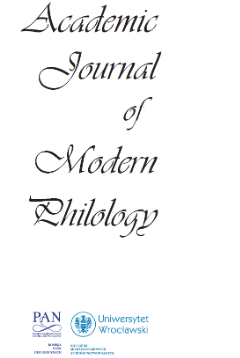Ịzọn narratives: Nengi-Ilagha’s Condolences, and Okara’s The Voice and “Little Snake and Little Frog”.
Ịzọn narratives: Nengi-Ilagha’s Condolences, and Okara’s The Voice and “Little Snake and Little Frog”.
Author(s): God’spower Tamaraukuro PreziSubject(s): Language studies, Language and Literature Studies, Studies of Literature, Theory of Literature
Published by: Komisja Nauk Filologicznych Oddziału Polskiej Akademii Nauk we Wrocławiu
Keywords: story; narrative; narrator; griot; Ịzọn
Summary/Abstract: Beyond its definition as a story or an account of a sequence of connected events and experiences that is told or written in prose or poetry form in great detail and arranged in a logical sequence, or as the practice and art of telling stories, the narrative holds a special place of honour in the West African literary space. Although comparatively few are gifted in the art of story-telling, many often participate in listening. The griots, as these story-tellers or narrators are called in the countries that make up the Old Mali Empire, still wield some respect in modern times and often tell their stories in huge festival-like settings to the accompaniment of drums and tambourines. From the Senegambia in the West to Nigeria in the East, West Africa has produced literary giants in the narrative art form. Ousmane Sembene’s God’s bits of Wood(1960) and William Conton’s The African (1960) through D.T. Niane’s Sundiata: An Epic of Old Mali (1965) and Camara Laye’s TheAfrican Child (1953) to Chinua Achebe’s Arrow of God (1964) and J.P. Clark’s Ozidi (1966) all follow this narrative tradition. Ịzọn narratives consist of both the oral and written forms. However, this paper will focus on Bina Nengi-Ilagha’s Condolences (2002), Gabriel Okara’s The Voice (1964) and “Little Snake and Little Frog” (1992).
Journal: Academic Journal of Modern Philology
- Issue Year: 2018
- Issue No: 7
- Page Range: 131-140
- Page Count: 10
- Language: English

